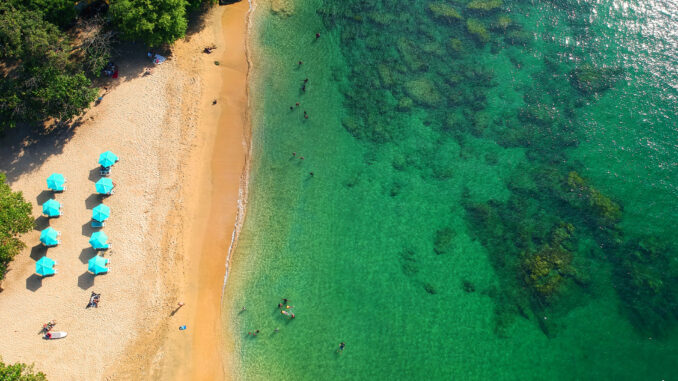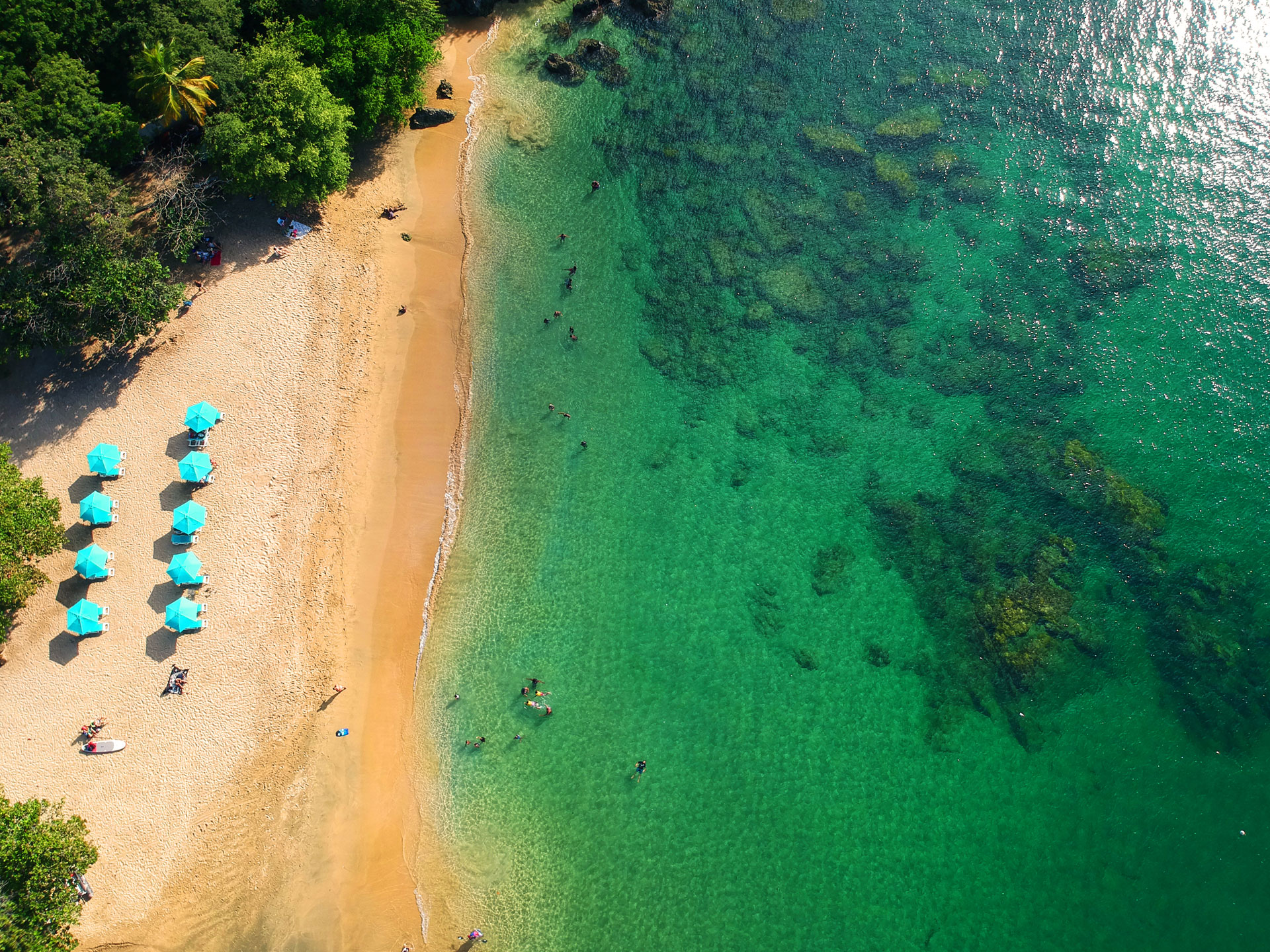

Cue the beach-bumming, waterfall-chasing, road-tripping, and night-owling, because the new year has ushered in the dry season and Tobago is calling all lovers of the great outdoors to her shores!
Truth be told, there’s no “wrong” time to visit this southern Caribbean gem. However, in these early calendar months, the island’s greens appear greener, the blues bluer, the water seems clearer, the air feels rarer, and nature generally appears to be showing off … just a little bit. So why not take advantage?
Whether you’re a seeker of off-the-grid serenity, or content with the predictability of the beaten path, here are a few stops to consider adding to your Tobago itinerary.
Beaches
Off-the-grid
Waveless bays and footprint-less sand go hand in hand here. But, accessing many of these idyllic stretches of coastline often requires a little extra effort.
The meandering North Coast Road presents two particularly enticing opportunities for castaway experiences. Accessible by boat, Moriah’s Cotton Bay is all calm, clear emerald waters that often remain undisturbed; while a moderate hike (at low tide) will take you to Castara’s Measure Bay, a peaceful cove that rarely hosts any visitors.
On the other side of the island, the Windward Road serves up two slightly less hidden but equally enchanting options of its own. Speyside’s Indian Bay, with its black sand and immaculate landscaping, as well as Charlotteville’s ever-popular yet never-crowded Pirate’s Bay. Both guarantee gorgeous scenery and favourable water conditions.
The beaten path
Conversely, those who count beach bars and watersports (and other human beings) as essential elements to a successful beach day are also spoiled for choice. The southwestern tip of the island delivers a range of options that are overflowing with high volumes of traffic and even higher-energy activities.
Whether it’s kite-surfing at the world-famous Pigeon Point Heritage Park; glass-bottom kayaking at Swallows Bay; scuba diving at Store Bay; surfing at Mt Irvine Bay, or horseback-riding at Buccoo Bay, you’re guaranteed to find a swatch of coastline where the drinks are flowing, the vibes are nice, and the water is idyllic.
Waterfalls
Off-the-grid
The deeper you venture into Tobago’s lush forests, the grander its cascading falls become. The treks to these watering holes certainly aren’t for the faint of heart (or low on energy). But for those who are thirsting for the challenge, the reward is well worth it.
If height impresses you, make the approximately 45-minute hike to Highland Falls in Moriah — the tallest single-drop waterfall on the island. Or, if one pool just isn’t enough, head on over to the village of Pembroke and follow the riverbank to Twin River Falls with its impressive three tiers, the third of which promises a spectacular bird’s eye view of the lower levels and surrounding vegetation — with nary a soul in sight.
The beaten path
Easy access is a big part of the appeal for some of the island’s most popular waterfalls, but that doesn’t make them any less worthy of attention. Defined trails and flat terrain make these choices ideal for those who prefer gentler forest explorations, as well as for children and families.
Be it a 10-minute jaunt to the modest but majestic single pool of Castara Waterfall; a three-minute stroll to the two-tiers at Parlatuvier Falls; or the 20-minute trek to Tobago’s crown jewel, Argyle Waterfalls, you’ll be more than satisfied with the scenery.
Just be prepared to share the moment with others who are also seeking out this particular brand of water therapy.
Views
Off-the-grid
You’ll find an abundance of jaw-dropping views of nature’s rich hues along Tobago’s scenic coastal roadways. Fortunately, many remain relatively undisturbed, inconspicuously tucked away off the island’s main arteries.
In the northeast, Mt Dillon presents an uninterrupted vista that stretches several miles to the fishing boats dotting the waters off Castara, while the famous, unnamed bend on the outskirts of the village overlooks a spectacular view of the emerald green shoreline of Englishman’s Bay.
Alternatively, a southeasterly route delivers the deck at Indian Bay, and the lookout point at the entrance to Blue Waters Inn, with their contrasting views of the churning Atlantic Ocean and placid Batteaux Bay. Journey just a few minutes further to Charlotteville and you’ll be treated to the awe-inspiring view of the near-perfect, heart-shaped Man-o-War Bay from Flagstaff Hill.
The beaten path
Some views are so stunning they’re worth taking in even if you have to share the moment with virtual strangers.
Case in point, a visit to Tobago isn’t complete without a stop at Fort King George to soak up the sweeping 180-degree view, from the old coconut plantations all the way to the island’s capital of Scarborough.
Similarly, a drive northwest isn’t really worth it if you don’t pause to take a mental picture (and a few real ones) of Parlatuvier Bay from the top deck of the unassuming Glasgow’s Bar, perched on the edge of the cliff just off the roadway.
Nightlife
Off-the-grid
The term “nightlife” takes on a whole new meaning for those seeking solitude in Tobago after sunset. Just be prepared to get wet.
From night-diving with one of the local dive shops, to glow-in-the-dark kayaking, to stand-up paddle bioluminescence tours, Tobago’s waters don’t close up shop after dark.
However, for those who much prefer to spend their nights on dry land, Castara’s weekly beach bonfire is an excellent water-adjacent alternative.
The beaten path
Tobago may not be a clubbing destination, but it’s got its own brand of after-hours for those who are ready to turn it up once the sun goes down. The Milford Road strip in Crown Point has developed a well-earned reputation as the island’s entertainment hub.
A collection of dine-in and take-away restaurants along with street vendors and bars create an infectious energy that wakes up the otherwise sleepy community in the evening and keeps the proverbial party going well into the early morning hours.
